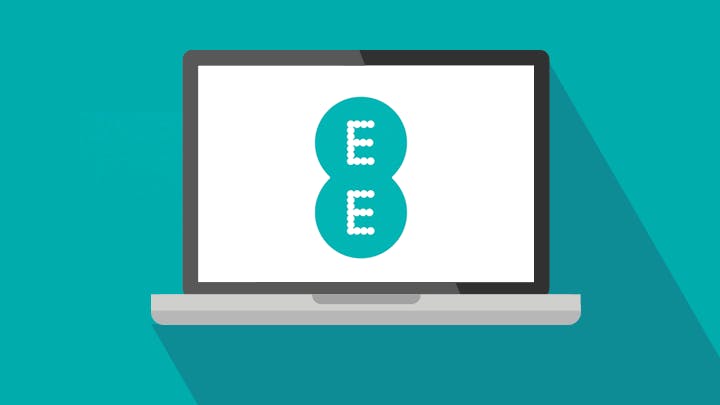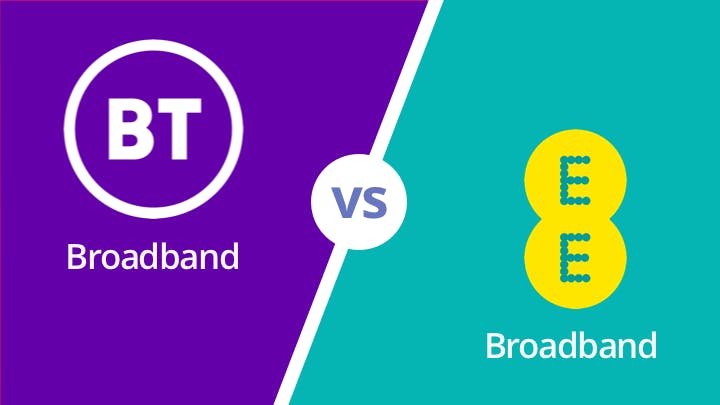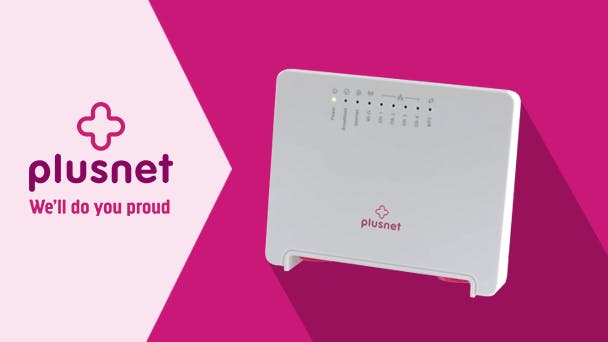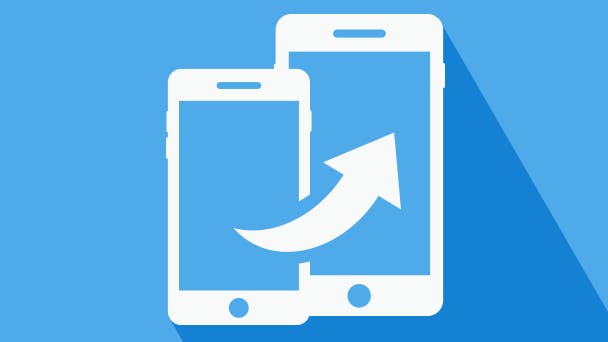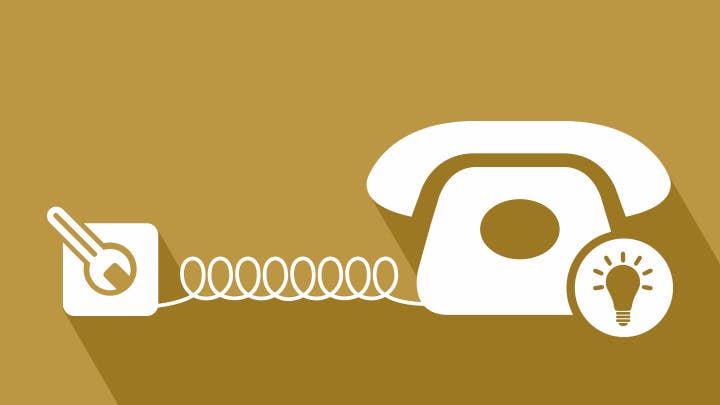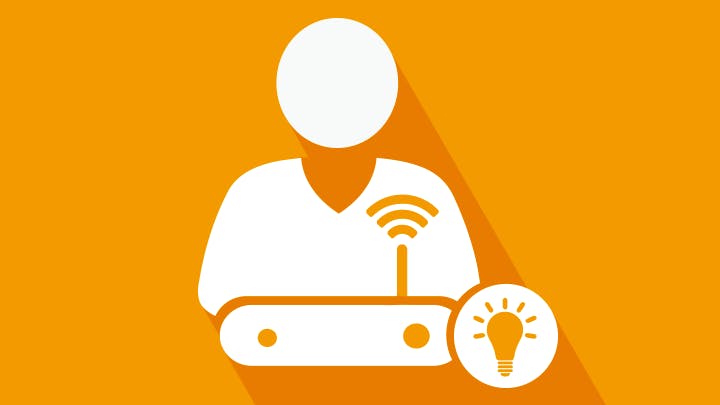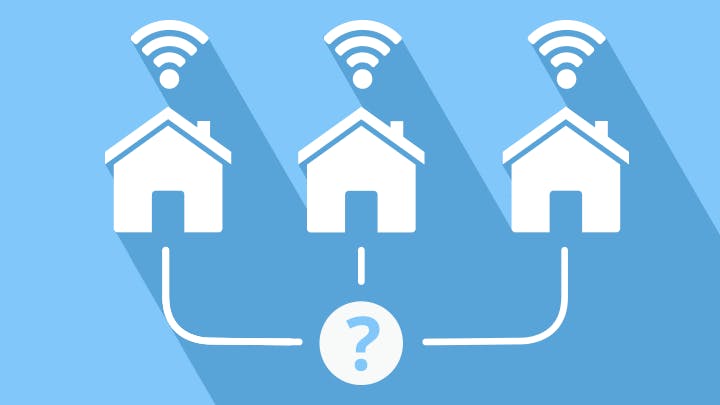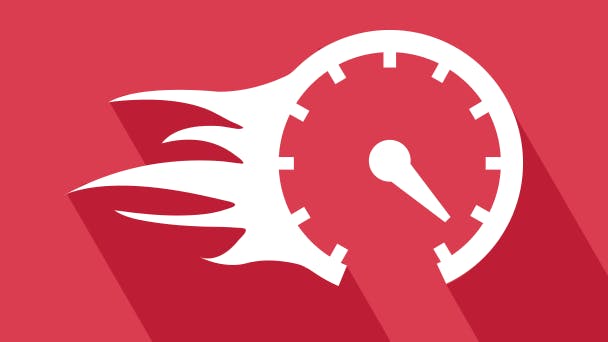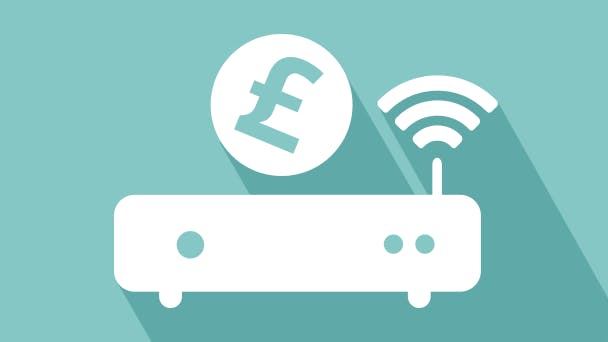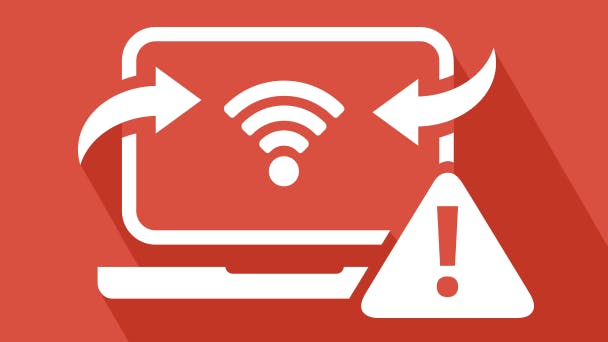
Let’s be honest, picking the right fibre optic broadband package can be daunting, and the jargon you'll hear along the way can make the experience a whole lot more complicated than it needs to be.
Given this, we thought it would be helpful to break down two of the most common terms you’ll hear during your search for the right fibre optic package: FTTP and FTTC.
So, what the heck do they mean, and which is best for you?
Let’s dive straight in…

- 75Mb average* speed
- No TV channels
- £0.00 Setup costs
- 24 month contract
- £25.00 per month
- £23.34 Avg. monthly cost

- 150Mb average* speed
- No TV channels
- £0.00 Setup costs
- 24 month contract
- £24.00 per month
- £20.46 Avg. monthly cost

- 67Mb average* speed
- No TV channels
- £0.00 Setup costs
- 24 month contract
- £25.00 per month
- £24.88 Avg. monthly cost

- 132Mb average* speed
- No TV channels
- £0.00 Setup costs
- 24 month contract
- £29.99 per month
- £33.49 Avg. monthly cost

- 150Mb average* speed
- No TV channels
- £0.00 Setup costs
- 24 month contract
- £27.00 per month

- 74Mb average* speed
- No TV channels
- £14.95 Setup costs
- 12 month contract
- £22.50 per month
- £25.13 Avg. monthly cost
*Average speeds are based on the download speeds of at least 50% of customers at peak time(8pm to 10pm). Speed can be affected by a range of technical and environmental factors. The speed you receive where you live may be lower than that listed above. You can check the estimated speed to your property prior to purchasing.
What is fibre?
Fibre optic, as you probably already know, is superfast broadband. This type of broadband is a game-changer for large families, serious gamers, and anyone who runs their own business.
It’s ideal for such users as it allows multiple devices to operate simultaneously without a hitch, and it’s far more reliable than the standard ADSL broadband.
How does fibre work?
The optical fibres within the tubing of fibre cables are about the width of a human hair and designed to carry light.
It’s actually quite simple; the casing around the inside of the optical fibres is one-hundred percent reflective, allowing light to bounce off the sides and traverse along the cables. When the end of the cable, the flashes are recognised as data.
This, in a nutshell, makes for a seriously fast broadband connection.
Fibre-optic technology is the crème de la crème of broadband, providing us with the fastest connections available. In the UK, FTTC and FTTP are the two main types of fibre broadband you'll come across.
What is FTTC?
FTTC stands for 'fibre-to-the-cabinet'. This type of broadband uses a mix of fibre optic cables up to the street cabinets, and then conventional copper wires from these cabinets to homes and businesses.
Since FTTC leverages existing street cabinets and the older copper wire infrastructure, it's a more cost-effective solution that avoids extensive roadwork and can be installed fairly quickly.
Most of the UK has access to FTTC, which makes it a widely available option. However, the use of copper wires does mean that FTTC generally offers lower speeds compared to a full fibre connection. Speaking of which...
What is FTTP?
On the other side of the spectrum, we have FTTP, which stands for 'fibre-to-the-premises' (also known as FTTH - 'fibre-to-the-home'). This is a pure fibre optic connection that runs directly from the internet provider to your home or office.
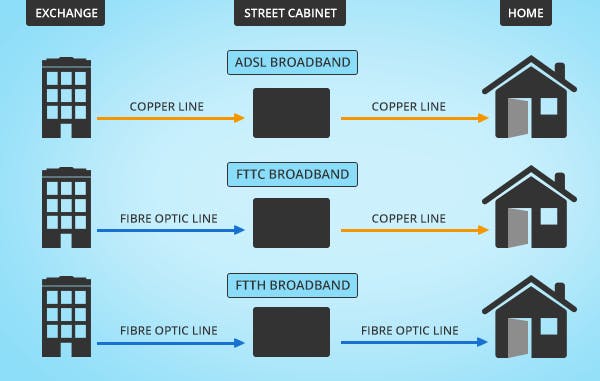
It's the fastest type of fibre broadband available, capable of delivering speeds up to a staggering 1Gbps (that's 1,000Mbps).
FTTP is less widely available than FTTC. Still, in recent years networks have been working hard to expand coverage, so there's a better chance you can get it at your address. Use our broadband checker to see if it's available in your area.
Which is better?
Well, it depends on what you’re looking for.
In terms of pure speed, FTTP is better. For example, if your family uses several devices at once – game consoles, iPads, on-demand TV, etc – then FTTP will be that much faster than FTTC, and won’t slow down any of your gizmos.
And if you run a business, you’ll almost certainly benefit from a FTTP connection, not only because the speeds are a lot quicker, but also because there’s less chance the internet will cut out half-way through an important email to a client.
Let’s take a look at the pros and cons of each:
How does FTTC and FTTP compare?
- Speed: FTTP blows FTTC out of the water with download speeds of up to 1Gbps and beyond
- Cost: The installation of FTTP can be more expensive due to the need for new infrastructure, making FTTC a more budget-friendly option for many
- Availability: FTTP's rollout is ongoing, but it's not yet as widespread as FTTC
It's important to note that the actual speeds you'll get can vary depending on your location, so it's always wise to check with your provider for the most accurate information.
Where can I get FTTC deals?
FTTC, while not as fast as FTTP, still offers a significant speed boost over traditional broadband. Many providers offer competitive deals on FTTC packages.
Here’s the thing; although FTTC is slower than FTTP, it’s still fibre, and it’s still properly fast. What's more, broadband providers offer some competitive FTTC deals.
Here’s where you’re likely to find some great deals:
- BT – BT offer a range of entry-level fibre packages, with speeds between 36-67Mbps. It also offers a range of ultrafast broadband plans, if you can get them at your address
- TalkTalk – TalkTalk FTTC broadband is available at speeds of either 35Mbps or 63Mbps
- Sky – not only do Sky offer a range of top-class TV, it also provides some pretty decent broadband, too
Remember, always check the speeds with your provider first, as they’ll likely vary from those advertised above.
You can check what type of broadband is available in your area by using our postcode checker, below:
Compare broadband deals in your area

Where can I get FTTP deals?
Getting FTTP deals can be a little trickier than FTTC because, as I say, it’s not widely available. But there are a couple of providers who can help:
- Virgin Media – All of Virgin Media’s broadband packages are fibre optic, and it offers some very impressive download speeds of up to 1.3Gbps. Now, technically, Virgin Media doesn’t offer a pure fibre-optic connection – that’s because it uses a special cable that’s mostly made of copper. Difference is, these cables can send data a lot faster than standard phone lines.
- Gigaclear – Gigaclear offers seriously fast FTTP broadband, with speeds of up to a whopping 900Mb. Bear in mind, though, with Gigaclear, you may have to pay a hefty connection fee if you want to use it.
How do I get fibre broadband?
97% of UK homes have access to superfast fibre broadband with speeds of at least 30Mbps, while more than half can also get full fibre broadband.
Getting full fibre broadband may sometimes require an engineer visit to install new components, especially if you've never had a fibre connection before. The process of installing and setting up a fibre connection in your home is generally straightforward and shouldn't take longer than a few hours.
Does fibre optic use a phone line?
Luckily, these days many providers offer broadband-only options. This means you can get a fibre connection without having to sign up to line rental.
How do I switch to fibre?
So, now that you know more about FTTC and FTTP broadband, next step is to choose the one that’s right for you.Simply click on the button below to compare packages and choose the one that suits you best.Once you’ve done that, plug your swanky new router into the appropriate socket, wait a while, and hey presto! Enjoy your new superfast broadband.




